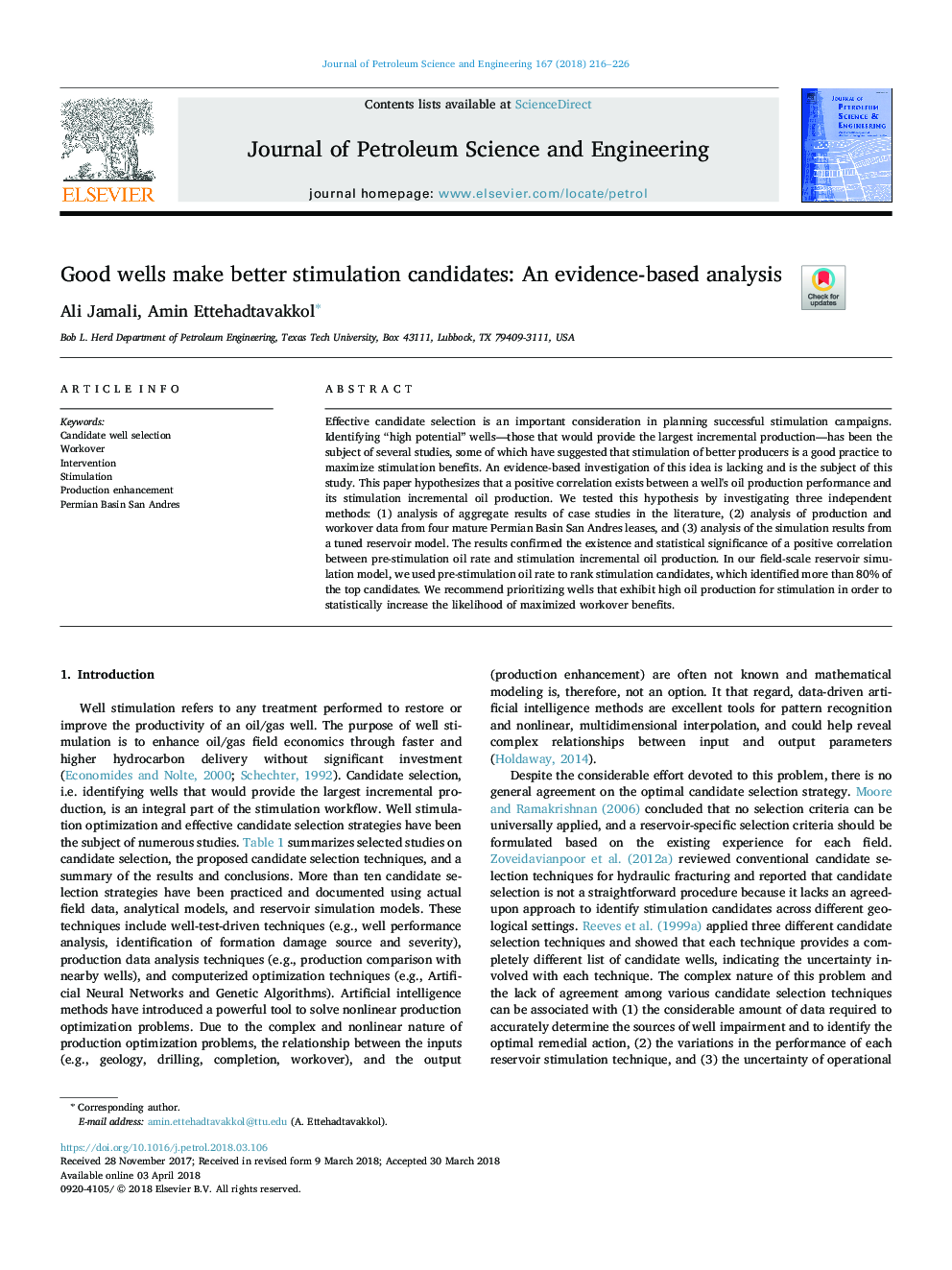| Article ID | Journal | Published Year | Pages | File Type |
|---|---|---|---|---|
| 8124777 | Journal of Petroleum Science and Engineering | 2018 | 11 Pages |
Abstract
Effective candidate selection is an important consideration in planning successful stimulation campaigns. Identifying “high potential” wells-those that would provide the largest incremental production-has been the subject of several studies, some of which have suggested that stimulation of better producers is a good practice to maximize stimulation benefits. An evidence-based investigation of this idea is lacking and is the subject of this study. This paper hypothesizes that a positive correlation exists between a well's oil production performance and its stimulation incremental oil production. We tested this hypothesis by investigating three independent methods: (1) analysis of aggregate results of case studies in the literature, (2) analysis of production and workover data from four mature Permian Basin San Andres leases, and (3) analysis of the simulation results from a tuned reservoir model. The results confirmed the existence and statistical significance of a positive correlation between pre-stimulation oil rate and stimulation incremental oil production. In our field-scale reservoir simulation model, we used pre-stimulation oil rate to rank stimulation candidates, which identified more than 80% of the top candidates. We recommend prioritizing wells that exhibit high oil production for stimulation in order to statistically increase the likelihood of maximized workover benefits.
Related Topics
Physical Sciences and Engineering
Earth and Planetary Sciences
Economic Geology
Authors
Ali Jamali, Amin Ettehadtavakkol,
